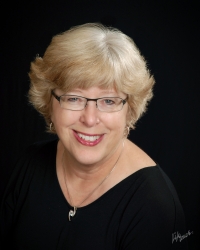Is there TRUTH in fiction?
Let’s start with a definition. Good place as any for a writer to begin, wouldn’t you say? The top Google definition of fiction says it’s “literature in the form of prose, especially short stories and novels, that describes imaginary events and people.”
Apparently, publishers embrace and then expand on that definition. On the copyright page of most novels, publishers include a paragraph proclaiming: “This is a work of fiction. Names, characters, places, and incidents either are the product of the author’s imagination or are used fictitiously. Any resemblance to actual persons, living or dead, is entirely coincidental.”
How can the words imagination and coincidental resemblance appear in the same paragraph? It feels like a cover-up to me! You know, a polite legalistic way to CYA—cover your a(blank, blank).
To me, the words imagination and resemblance seem oxymoronish (did I just make up a word?). Either the novel is an invention of the first order or it’s not. I’m not suggesting that every novel is really a work of non-fiction, in the form of an autobiography or a memoir.
Certainly not. But I am of the mind, as I’ve heard it’s said, that a writer’s first novel is autobiographical. Perhaps this stems from advice aspiring authors are frequently given: “Write what you know.”
Bingo. If we are to write what we know, how can that be a product of our imagination? If the story is derived from the writer’s mind, from his or her psyche, their life’s experiences must in some way drive and color the words that flow from their brain through their arms and out through their fingertips, whether they have pen in hand or a keyboard in front of them.
Take a novel’s setting, for example. Unless it’s pure fantasy or science fiction, the setting is often where the writer spent their childhood or a place they lived or traveled to that made a lasting impression. I can attest to that. Home base in my What’s Not trilogy is Boston, Massachusetts. Though not born there, I did work and live in the city for a few years after my divorce. I even bought a condo just south of the city. And to this day, I get goosebumps each time I walk through the North End. Have I lived there in a prior life? I wonder.
Strangely, I get the same eerie feeling when I’m in Tuscany. Those elongated Cypress trees aligning the autostrada and hillsides somehow speak to me. I haven’t figured out yet what they’re saying. Maybe I planted them there back in the day. You’d think, given the impression Tuscany has on me, I’d write it into one of my stories. Perhaps someday.
But alas! In my debut novel, What’s Not Said, I opted for a critical scene in Venice, which I’ve been to twice. Lucky me. While the storyline of that scene is made-up, the setting is typically Venice.
Taking this a step further, I incorporated other European destinations I’ve traveled to in my other two books. Paris appears in the sequel, What’s Not True, as well as in the last book in the trilogy, What’s Not Lost, where Santorini and Katakolon, Greece, are each foundational to the plot.
I’m not sure I could write about a place I’ve never been. Perhaps if I had a more well-developed imagination!
So what about characters? There are so many to consider. The protagonist, the villain, those secondary characters who often reveal more about the hero, or heroine, than they do themselves. It’s relatively easy to disguise the main character. Their size, shape, coloring. But somehow, when it gets down to dialogue, the nitty-gritty that moves the plot along, I bet the writer’s voice literally seeps into the story with regularity. How could it not? On the flip side, how the other characters respond could be imagined or revisionary of past interactions. Maybe that’s why creating dialogue is my most favorite aspect of writing.
Finally, what about the plot? Readers sometimes ask me if I fell in love with a younger man I met in Venice on a solo vacation? I sigh bigly. No. And neither of my husbands was not diagnosed with a life-threatening illness. But I was a marketing manager who loved the Boston Red Sox (still do). Oh, and I had a yellow tabby, named Topher, who ultimately earns a starring role in What’s Not Lost, the last book in the trilogy.
So what’s my point? I think there is a measure of truth in fiction. Expressed often through the setting and the cast. Yet it is the plot itself where the writer’s imagination can run wild, exploding with “what if” scenarios, oftentimes astonishing the author themselves.
Which is why writing fiction is so much fun. And that’s the truth.
.png)

_w200_h/A%20Whale%20of%20a%20Murder%20Front%20Cover%20(1)_02240335.png)